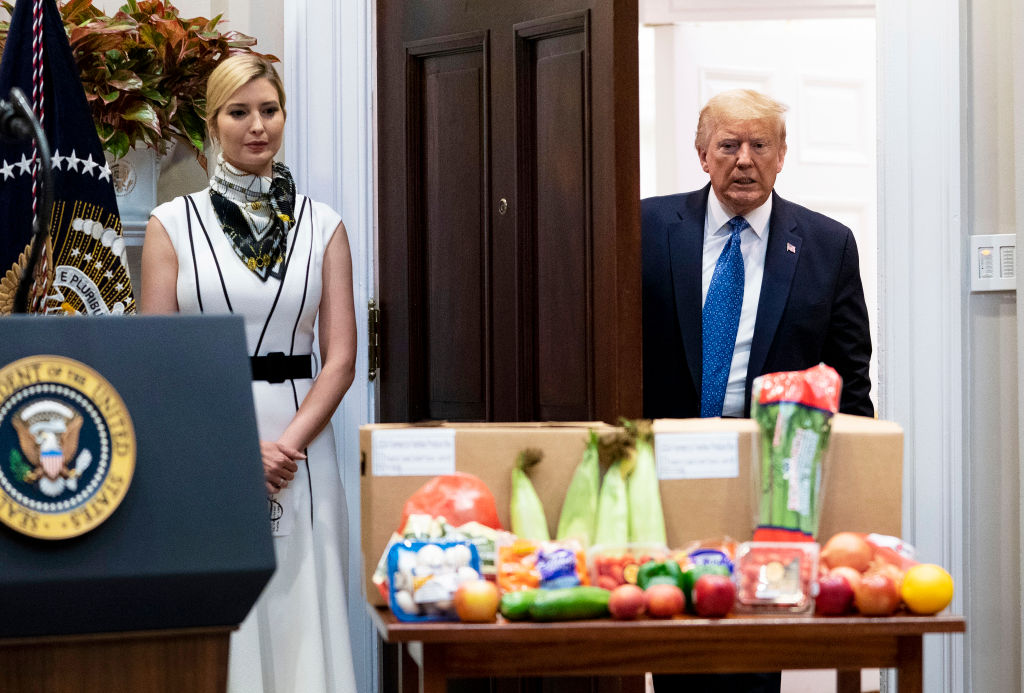Record agricultural subsidies will account for 40 percent of U.S. farm income this year


The federal government will send a record $46 billion to farmers this year, mostly in the South and Midwest, and the payments have "accelerated in recent weeks as the president looks to help his core supporters who have been hit hard by the double whammy of his combative trade practices and the coronavirus pandemic," The New York Times reports. "The breadth of the payments means that government support will account for about 40 percent of total farm income this year. If not for those subsidies, U.S. farm income would be poised to decline in 2020."
Even with the gush of cash from the White House, farmers are experiencing a rise in bankruptcies and declining sales, and bipartisan critics in Congress "have argued that small farmers have missed out on the bulk of the bailout, while large and some foreign-owned farms have benefited," the Times reports. The U.S. Department of Agriculture used an accounting trick to funnel some of the money to tobacco farms in North Carolina, savaged by China's retaliatory move to stop buying U.S. tobacco in 2018. Corn, soybeans, lobsters, and peanuts have also been pummeled by Trump's trade wars with China and Europe.
The Government Accountability Office found last month that $14.5 billion of farm aid in 2019 had been handed out with politics in mind, and the Office of Special Counsel determined last week that Agriculture Secretary Sonny Purdue improperly boosted President Trump's re-election while touting the Farmers to Families Food Box Program in August during an official event in North Carolina.
The Week
Escape your echo chamber. Get the facts behind the news, plus analysis from multiple perspectives.

Sign up for The Week's Free Newsletters
From our morning news briefing to a weekly Good News Newsletter, get the best of The Week delivered directly to your inbox.
From our morning news briefing to a weekly Good News Newsletter, get the best of The Week delivered directly to your inbox.
"That's what's going to continue to happen — four more years — if America gets out and votes for this man, Donald J. Trump," Purdue told attendees. The USDA was ordered to reimburse taxpayers for Purdue's expenses attending the event, but the department is pushing back, insisting that Purdue did not "encourage attendees to vote for a candidate or party or advocate for a partisan political group."
"Farmers are not the only constituency benefiting from the president's largess," the Times notes. "He has promised $200 prescription drug cards to millions of seniors, approved $13 billion in aid to Puerto Rico, which could help his prospects in Florida, and he directed his Agriculture Department include letters signed by him in millions of food aid boxes that are being distributed to the poor." Read more at The New York Times.
A free daily email with the biggest news stories of the day – and the best features from TheWeek.com
Peter has worked as a news and culture writer and editor at The Week since the site's launch in 2008. He covers politics, world affairs, religion and cultural currents. His journalism career began as a copy editor at a financial newswire and has included editorial positions at The New York Times Magazine, Facts on File, and Oregon State University.
-
 Venezuela’s Trump-shaped power vacuum
Venezuela’s Trump-shaped power vacuumIN THE SPOTLIGHT The American abduction of Venezuelan President Nicolás Maduro has thrust South America’s biggest oil-producing state into uncharted geopolitical waters
-
 Most data centers are being built in the wrong climate
Most data centers are being built in the wrong climateThe explainer Data centers require substantial water and energy. But certain locations are more strained than others, mainly due to rising temperatures.
-
 ‘Maps are the ideal metaphor for our models of what the world might be’
‘Maps are the ideal metaphor for our models of what the world might be’Instant Opinion Opinion, comment and editorials of the day
-
 TikTok secures deal to remain in US
TikTok secures deal to remain in USSpeed Read ByteDance will form a US version of the popular video-sharing platform
-
 Unemployment rate ticks up amid fall job losses
Unemployment rate ticks up amid fall job lossesSpeed Read Data released by the Commerce Department indicates ‘one of the weakest American labor markets in years’
-
 US mints final penny after 232-year run
US mints final penny after 232-year runSpeed Read Production of the one-cent coin has ended
-
 Warner Bros. explores sale amid Paramount bids
Warner Bros. explores sale amid Paramount bidsSpeed Read The media giant, home to HBO and DC Studios, has received interest from multiple buying parties
-
 Gold tops $4K per ounce, signaling financial unease
Gold tops $4K per ounce, signaling financial uneaseSpeed Read Investors are worried about President Donald Trump’s trade war
-
 Electronic Arts to go private in record $55B deal
Electronic Arts to go private in record $55B dealspeed read The video game giant is behind ‘The Sims’ and ‘Madden NFL’
-
 New York court tosses Trump's $500M fraud fine
New York court tosses Trump's $500M fraud fineSpeed Read A divided appeals court threw out a hefty penalty against President Trump for fraudulently inflating his wealth
-
 Trump said to seek government stake in Intel
Trump said to seek government stake in IntelSpeed Read The president and Intel CEO Lip-Bu Tan reportedly discussed the proposal at a recent meeting
